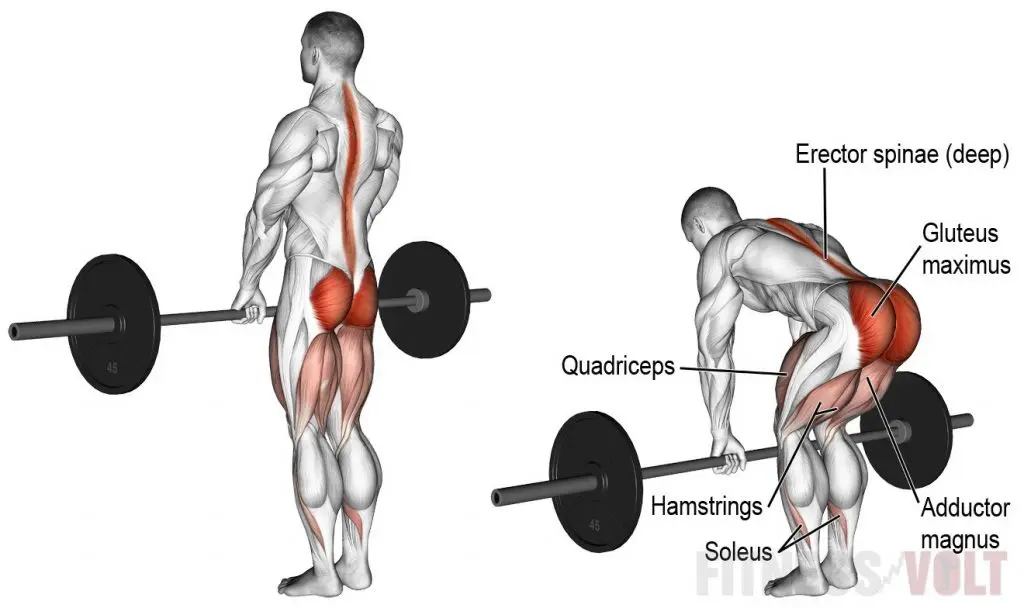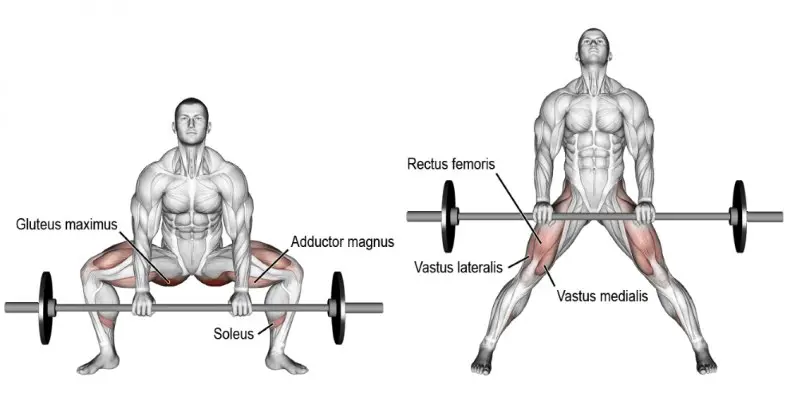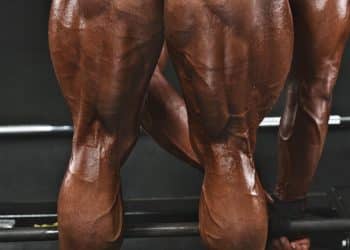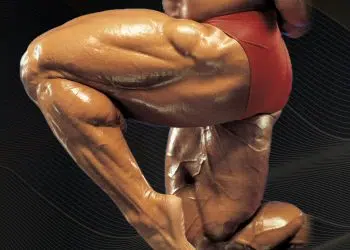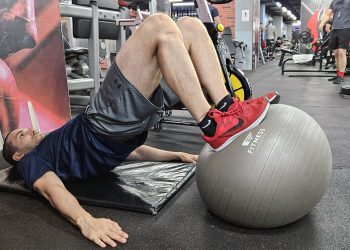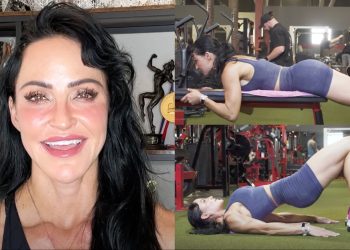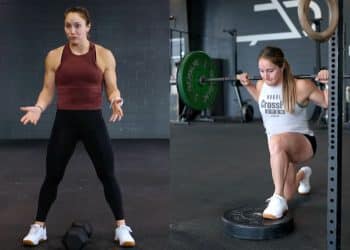Building a jacked pair of wheels involves a lot more than just doing squats, leg presses, and calf raises and many people seem to ignore this fact. Now, focusing on just quads exercises will only cause imbalances visually and functionally, so… the only rational solution, of course, would be to implement more hamstring exercises for complete lower body development.
There are plenty of amazing hamstring exercises which also works several other muscles in the posterior chain (Backside if the body), so you’re actually “killing two birds with one stone”.
Now, having an equally strong set of hamstrings will do wonders for your lifts, and it’s a must for any function requiring knee and hip flexion. But, before we show you some great exercises, it’s important to know the muscles and function of the hamstrings.
Hamstring Muscles and Function
So, the hamstring muscles are obviously very important for any movement which causes the knees to bend since this is its main function. But there’s a little more you should know in order to train this muscle for maximum effectiveness. (1)
The hamstrings consist of three muscles which include:
- Semitendinosus
- Semimembranous
- biceps femoris
These muscles are responsible for decelerating knee and hip extension and this gives us a clue as to how resistance training strengthens the entire hamstring complex. (1)
Level Up Your Fitness: Join our 💪 strong community in Fitness Volt Newsletter. Get daily inspiration, expert-backed workouts, nutrition tips, the latest in strength sports, and the support you need to reach your goals. Subscribe for free!
So, pretty much any exercises which allow sufficient, and full range extension in both the hip and knee joints while providing tension is going to yield the best results.
Now, the five exercises we chose all require knee and hip extension to an adequate degree but they also allow for maximum loading, and we know a progressive stress stimulus is essential for muscle hypertrophy. (2)
But we also know that the hamstrings function most effectively by building up energy during the eccentric (Negative) portion of repetition; so it’s important to incorporate exercises which focus on eccentric loading to promote maximum muscular efficiency during the concentric (Positive) portion of a repetition. (1, 2)
This will promote more strength, which equals more growth!
Muscles Trained
Just to be clear, all exercises chosen will work the same muscles but to what extent depends on the exercise’s mechanics and your form during the exercise.
But… several muscles besides the hamstrings will receive secondary stimulation because they assist with the lifts or movements, and these include…
- Hamstrings (Obviously)
- Glutes
- Calves
- Spinal erectors
- Core
- Hip muscles
Now, here are the 5 must-have hamstrings exercise…
1- Glute Ham Raise
The glute ham raise is a killer hamstring exercise and it has earned a spot on our list because of its effectiveness and functional benefits. Now, you don’t need any weight for this exercise as you’ll only be using your bodyweight but if you’re more advanced, adding weight is very beneficial.
But if you’re just starting out the glute ham raise will probably be very challenging, so just be patient and practice the exercise in small segments with good form. The effectiveness of adequate hamstring loading during the glute ham raise is the main reason we recommend this exercise for big gains! (1)
But, a study showed the GHR to maximize hamstring activity which leads us to believe it’s a necessity rather than an option for amazing hamstring development. (3)
How to do a glute ham raise
- Position your body on the machine while keeping your torso upright, and secure your legs in place. Your lower quads should be in contact with the padding.
- Then, cross your arms on your chest and keep your back straight with your chest up.
- Now, slowly lower your torso down and forward until you’re about parallel to the floor. Keep your core tight and inhale.
- Then, flex your legs and squeeze your glutes to raise you back to the starting position while exhaling.
- Repeat
Tips:
- You can perform this exercise with half reps until you develop more strength to perform full reps.
- Don’t round your back as this will make the exercise very difficult.
- Retract your shoulder blades and keep your core tight during the concentric (Positive) phase of a repetition.
- Squeeze and flex your hamstrings to ensure you perform the exercise as efficiently as possible. Your hamstrings should be doing most of the work, while your spinal erectors help to complete the movement in an efficient manner.
2- Stiff-Legged Deadlift
The stiff-legged deadlift is a variation of the standard deadlift but this version really targets the hamstrings and you’ll feel it the next day for sure! Now, by keeping the legs straight your hamstrings have no choice but to engage and this places a lot of tension on them which stimulates plenty of posterior growth.
But many people confuse the stiff-legged deadlift with the Romanian deadlift but the straight leg is the only difference… which means variety is always important for making gains!
SLDL’s and its variations have shown to be the best choice of exercise for working the hamstrings, and so this influences a few of our picks as well. Now, when eighteen women perform the SLDL, bilateral squat, and rear-foot elevated squat, the SLDL showed significant muscle activation. So the proof is in the studies! (4)
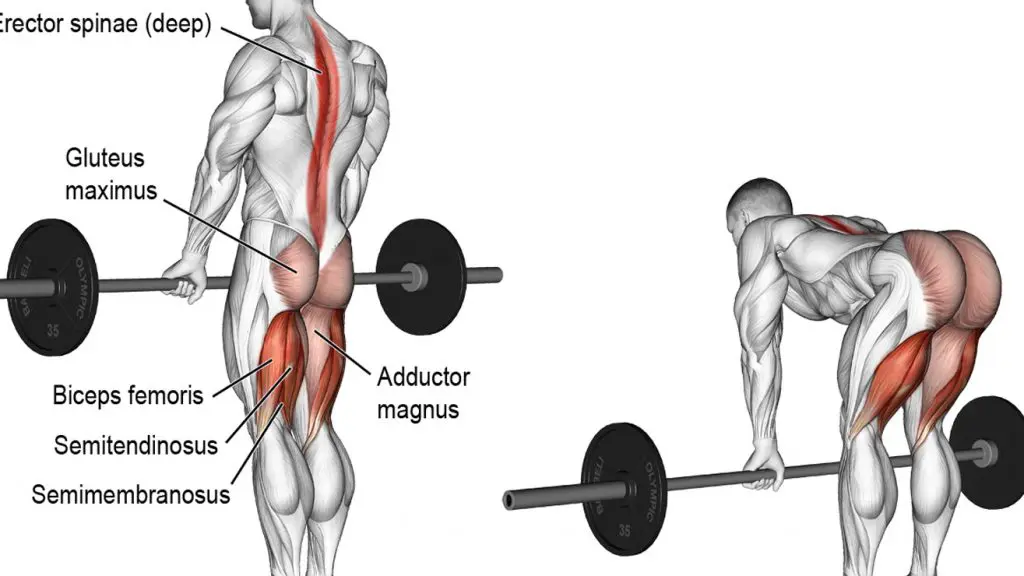
How to do the stiff-legged deadlift
Level Up Your Fitness: Join our 💪 strong community in Fitness Volt Newsletter. Get daily inspiration, expert-backed workouts, nutrition tips, the latest in strength sports, and the support you need to reach your goals. Subscribe for free!
Initially, you can bend your knees to grab the barbell off the floor but after that keep your legs straight during your set.
- Bend down and grab the barbell with a slightly wider than shoulder-width grip. Keep your back straight.
- Then, lift the barbell until you’re standing straight up while retracting your shoulder blades back and downward.
- Now, with your legs straight, lower the barbell down until it reaches mid, lower leg. Keep the barbell close to your body and inhale during this portion of the exercise.
- Then, as you lift the barbell back up, push through your heels and contract both your hamstrings and glutes. Move your hips forward to complete the movement at the top, and exhale during this portion of the exercise.
- Repeat
Tips:
- Avoid bending your knees to keep optimal tension on the hamstrings.
- Make sure to retract your shoulder blades back and down but keep your back straight during the exercise to prevent back injury.
- Always warm up with lightweight and work your way up to heavy resistance loads to ensure optimal safety.
- Your back should be parallel to the ground for the negative portion of the repetition.
3- Romanian Deadlift
The Romanian deadlift is only slightly different than the stiff-legged deadlift in that you’ll bend your knees during the exercise. But, it’s an incredibly popular and effective movement which you absolutely need in your hamstring routine.
The RDL’s primary movement involves both hip flexion and extension which teaches a lifter to not use their lower back so much and eliminate lumbar spine stress. (5)
It’s also important to mention that the RDL showed maximum hamstring activity in a study similar to the glute ham-raise, and it should absolutely be a main hamstring exercise in your routine. (6)
Now, during the RDL you don’t want to touch the barbell to the floor unlike with a regular deadlift and this keeps all the tension on the hamstrings. So, these few differences will really make this exercise worth making the minor changes because you will feel your hams more during this movement.
How to do the Romanian deadlift
- Bend over and grab the barbell with knees slightly bent and back straight.
- Then, push through your heels and thrust your hips forward until you’re almost standing straight but don’t lock out your knees at the top.
- Now, slowly lower the barbell down but stop mid-lower leg and don’t allow it to touch the floor.
- Repeat
Tips:
- Always make sure to keep your knees bent and avoid touching the floor with the barbell. You want to keep constant tension on the hamstrings so only lower the barbell to about mid, lower leg.
- Pressing through your heels will ensure your hamstrings receive optimal tension during the exercise.
- Thrusting your hips forward will make the movement more fluid and effective.
- Make sure to keep the barbell close to your body to eliminate pressure on the lumbar spine.
4- Swiss Ball Leg Curl
The Swiss ball leg curl isn’t like your conventional hamstring curl because it’s performed by lying on the ground and using a Swiss ball, but it’ll make your hams burn just the same! Now, this exercise may take a little getting used to since you’re balancing your legs on a ball but the exercise should not be that difficult since your torso is also supporting you during the movement.
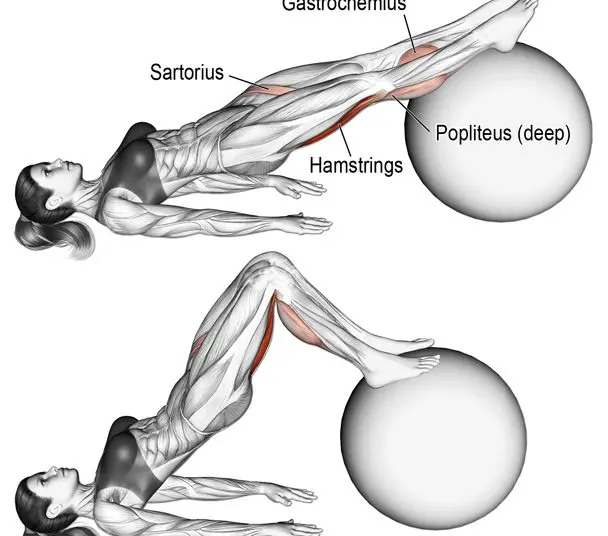
How to do the Swiss ball leg curl
- Lie on the floor and rest your lower legs on a Swiss ball.
- Then, place your hands on your hips and lift your butt off the ground so your body is in a straight line.
- Now, flex your hamstrings and pull the ball toward your butt with your heels until your feet are flat on the ball. Exhale during this portion of the exercise.
- Hold for a couple of seconds.
- Then, slowly straighten your legs until your legs are resting on the ball. Inhale during this portion of the exercise.
- Repeat
Tips:
- You can deflate the Swiss ball a little bit if you find it hard to balance.
- Always keep your hips up and back straight to ensure you keep the most tension on the hamstrings.
- You can place your hands wherever you desire as long as you maintain proper form.
5- Sumo Deadlifts
The Sumo deadlift does it all since it’s a compound exercise which will blast your hamstrings and glutes into some serious growth. Now, what’s great about the Sumo deadlift (And why many people prefer it over a conventional deadlift) is that it allows you to remain close to your center of gravity. (7, 8)
What does that mean?
Well, conventional deadlifts often place a lot of stress on the lumbar spine for some lifters and this is both dangerous and risky. Especially if you have preexisting back issues but some people just do not do well structurally with the conventional deadlift.
So… that’s where the Sumo deadlift comes in and yes, this movement does involve positioning your body like a Sumo wrestler (For those who were wondering).
The Sumo deadlift lessens lumbar spine pressure and still allows you to train with heavy weight.
How to do a Sumo Squat
- Stand in front of the barbell with your legs spread wide apart and feet turned outward.
- Then bend over and grab the barbell with a wider than shoulder-width grip. Keep your back straight and core tight.
- Now, deadlift the bar by pushing through your heels until you’re legs are almost straight but don’t lock out at the top. Exhale during this portion of the exercise.
- Then, lower your body back down until the barbell touches the floor. Inhale during this portion of the exercise.
- Repeat
Tips:
- Keep the barbell as close to your body as possible to reduce pressure on the lumbar spine.
- Keep your back straight and core tight during the exercise.
- Always push through your heels to protect your knee joints.
- Allowing your knees to pass bend too far over your feet is dangerous for your knees.
Final Thoughts
These effective hamstring exercises will serve you well in your pursuit of building massive legs but now it’s time for you to put them to the test. Now, no one said they’d be easy but if you keep practicing and stick with them you’ll see some pretty impressive results.
Sometimes changing up your routine is all you need to get past a plateau or to keep progressing consistently. But remember, hamstrings perform knee and hip flexion as this is their anatomical function, so be sure to adhere to the proper training protocols and mechanical technique to sufficiently stimulate them.
So, give your hamstrings equal attention as you would your quads or calves, and you’ll already be ahead of the pack!


